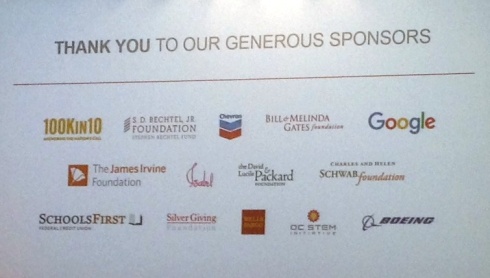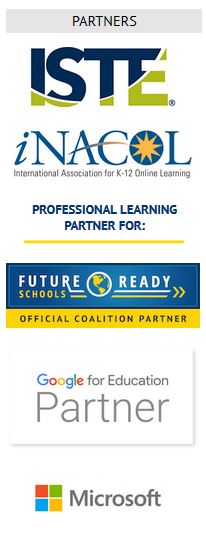By Thomas Ultican 9/5/2016
Mercedes Schneider’s newest book continues her legacy of scholarship and philosophical prescience. In School Choice; The End of Public Education? she documents and explains many facets of the issue. Three glaring problems with “school choice” as an education policy caught my eye: (1) Friedman’s choice ideology ends the concept of mandatory education for all, (2) “choice” has abandoned its original purpose and become a profiteering racket, and (3) “choice” is historically a method used to promote segregation.
School Choice Foundations
Austrian Economist Friedrich Hayek who believed in classical liberalism especially the concept that it is in the common interest that all individuals must be able to secure their own economic self-interest, without government direction. In September 1944, the University of Chicago Press published Hayek’s book The Road to Serfdom. It was squarely against government programs like social security and Roosevelt’s new deal.
In 1950, Hayek left the London School of Economics for the University of Chicago. It was there that Milton Friedman and a host of young scholars met their sole mate Hayek. They saw government social programs as seeds for tyranny and public education was no exception. Friedman became known as the father of school choice when he wrote, “The Role of Government in Education” advocating school vouchers for universal private education in 1955.
I knew all of this but Schneider unearthed an amazing quote from the paper I did not know. Friedman was not only opposed to schools run by democratically elected boards; he also believed mandates for compulsory education were an obstacle to freedom:
“Perhaps a somewhat greater degree of freedom to choose schools could be made available also in a governmentally administered system, but it is hard to see how it could be carried very far in view of the obligation to provide every child with a place.” (School Choice Page 32)
Schneider commented, “Here we have the idea that for the market to be at its best, it needs to be free from any obligation to educate all children.” And she continued in some depth clearly illuminating this anti-humanistic and fatally flawed theory that is the foundation of “school choice” theory.
A Legacy of Segregation
Mercedes Schneider is a product of segregated schools in St. Bernard Parish, Louisiana. She says the Orleans Parish schools she attended have a history that “does not inspire pride.” Not only were the schools segregated, but more tragically, the parish refused to construct new schools for the growing back student population. Not just separate schools for whites and blacks but not of equal quality by design.
After “Brown versus the Board of Education of Topeka” required the end of the farcical separate but equal policies, southern politicians turned to school choice and vouchers as a way to avoid integration. Milton Friedman’s timely paper was well received in the segregated south.
To this point Schneider states:
“Thus, what is clear about tuition grants, scholarships, or grants-in-aid, and the history of American public education is that these were tools used to preserve segregation. There it is: The usage of choice for separating school children into those who are ‘desirable’ and those who are not. Though it seems that most Southern states were ready participants in resisting the federal requirement to integrate their public education systems, Senator Byrd’s sentiment of ‘massive resistance’ was even formally declared in a U.S. legislative document commonly known as the ‘Southern Manifesto.’” (School Choice Page 22)
Today, it is not much different with the possible exception of more emphasis on class separation than in the past. Recently a blogger known as “educationrealist” posted this discerning observation:
“I offer this up as opinion/assertion, without a lot of evidence to back me: most parents know intuitively that bad teachers aren’t a huge problem. What they care about, from top to bottom of the income scale, is environment. Suburban white parents don’t want poor black and Hispanic kids around. Poor black and Hispanic parents don’t want bad kids around. (Yes, this means suburban parents see poor kids as mostly bad kids.) Asian parents don’t want white kids around to corrupt their little tigers, much less black or Hispanic. (White parents don’t really want too many Asians around, either, but that’s the opposite of the “bad kids” problem.)
“Parents don’t care much about teacher quality. They care a lot about peer group quality.”
Around 2003, a friend tried to convince my wife and I to send our daughter to High Tech High. This mother did not want her daughter to be exposed to all those bad influences at Mira Mesa High School. Mira Mesa High School is a quality school that graduates amazingly gifted students every year and sets them on to a course of academic and social success. But the new charter school that Bill Gates and Irwin Jacobs had put so much money into surely would not have all those feared “bad kids.”
“Begs to be Gamed”
“By 2015, according to the Education Commission of the States website, 42 states, the District of Columbia, and Puerto Rico all had charter school laws. Of these, 33 states had charter authorizing bodies, yet only 15 states and Washington, D.C., had standards for charter authorizers and the requirement that charter authorizers annually produce formal reports regarding the charter schools they oversee. Furthermore, only 11 states and the District of Columbia specify performance criteria to determine whether a charter should be continued or revoked.” (School Choice Page 59)
Charter schools have become the vogue privatization vehicle of the 21st century. Schneider presents a detailed background of charter school formation starting with Ray Budde’s 1974 conference paper that proposed a new structure for school management that he called “charter schools” and AFT President Albert Shanker’s 1988 fascination with Budde’s idea. Shanker extended Budde’s ideas with his own “school with-in a school” concept in which teachers would be authorized to experiment.
Shanker quickly became disenchanted by the direction the charter school movement took. It became clear to him that the new charter school laws made corruption and profiteering inevitable. In various articles, he highlighted the cases demonstrating how dangerous and poorly regulated charter schools were. He wrote of the Noah Webster schools gaming the system in Michigan for $4 million and of Washington D.C. giving a charter to a man charged with assault with a deadly weapon whose head of school security was a convicted felon. Schneider shares this quote from Shanker:
“A pluralistic society cannot sustain a scheme in which the citizenry pays for a school but has no influence over how the school is run. … Public money is shared money, and it is to be used for the furtherance of shared values, in the interest of e pluribus unum. Charter schools and their like are definitely antithetical to this promise.” (School Choice Page 57)
I was fascinated by the quotes from Addison Wiggins Forbes magazine article about why hedge fund operators are so pro-charter school industry. One quote reads:
“About the only thing charters do well is limit the influence of teachers’ unions. And fatten their investors’ portfolios.
“In part, it’s the tax code that makes charter schools so lucrative: … firms that invest in charters and other projects located in ‘underserved’ areas can collect a generous tax credit – up to 39% – to offset their costs.” (School Choice Page 101)
One of the most lucrative aspects of the charter industry seems to be facilities. Open a charter school and start a real estate company that specializes in leasing school facilities. Then you can charge yourself twice the going rates and the taxpayer picks up the bill. Schneider asks, “Why does the federal government not see through the potential real estate exploitation…?” Probably corruptions and cowardice have a lot to do with it.
Charter schools have never honestly out performed elected board directed public schools. In some cases, charter schools have gotten relatively good testing results, but on closer inspection these good testing results are not the result of good pedagogy. There are three common practices that help charters look good on testing; (1) instead of a balanced curriculum they focus on preparation for testing, (2) through various techniques, they only accept easier to educate students and (3) they do not back fill when students leave the school.
Instead of recognizing the amazing public education system we have in the United States our Congressional leaders are promoting charter schools both monetarily and with praise. Mercedes Quotes the Sense of Congress from their version of the new federal education law that is little more than a charter industry add. Paragraph 2 stated:
“It is the sense of the Congress that charter schools are a critical part of our education system in this Nation and the Congress believes we must support opening more quality charter schools to help students succeed in their future.” (School Choice Page 151)
Schneider concludes the charter school portion of the book with;
“Adequate monitoring of charter schools is not happening, by and large, and those individual using taxpayer money to serve their own interests by operating charter schools only contribute to damaging American public education” (School Choice Page 155)
I have endeavored to give a taste of this wonderful effort by Mercedes Schneider and encourage everyone to not only read it but share it with others. If we educators can educate the public about how our legacy passed down from previous generations is being robbed, the public will stop these villains immediately. Remember, they are greedy cowards who will quail before public sanction.
 Video link connected us with a simultaneous event being held at California State University, Fullerton. Three massive screens projected keynote speaker, Ernie Hudson who was in Fullerton. Besides being a popular actor, Hudson is a wonderful speaker. His speech was moving and entertaining.
Video link connected us with a simultaneous event being held at California State University, Fullerton. Three massive screens projected keynote speaker, Ernie Hudson who was in Fullerton. Besides being a popular actor, Hudson is a wonderful speaker. His speech was moving and entertaining. ing they call for is competency based education (CBE) delivered by computers and scored by a corporations. Instead of credits, students will earn badges from testing giants like Pearson Corporation. This graphic is from
ing they call for is competency based education (CBE) delivered by computers and scored by a corporations. Instead of credits, students will earn badges from testing giants like Pearson Corporation. This graphic is from